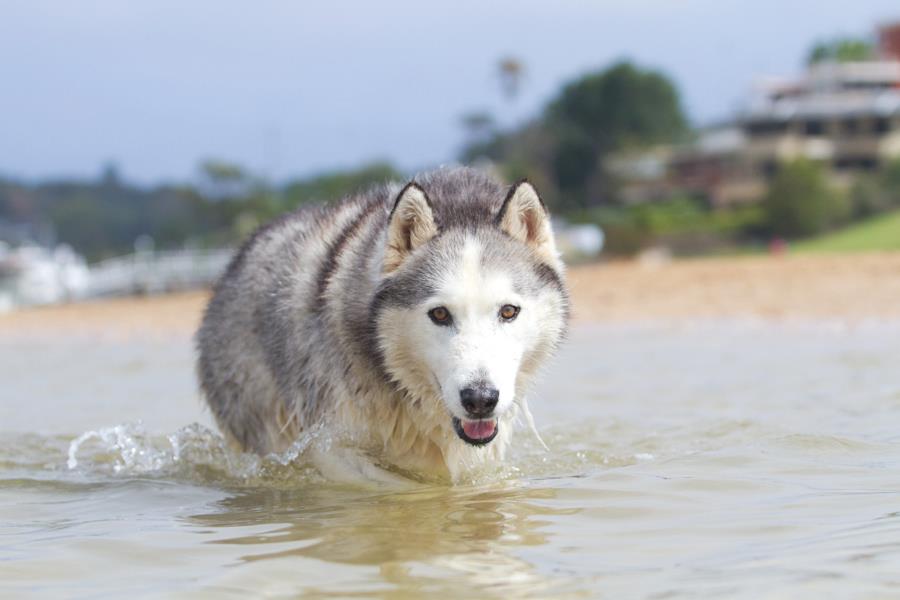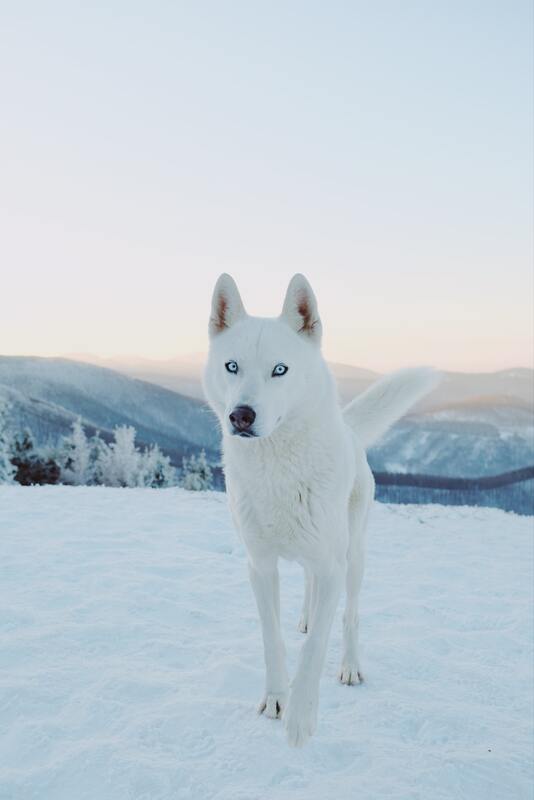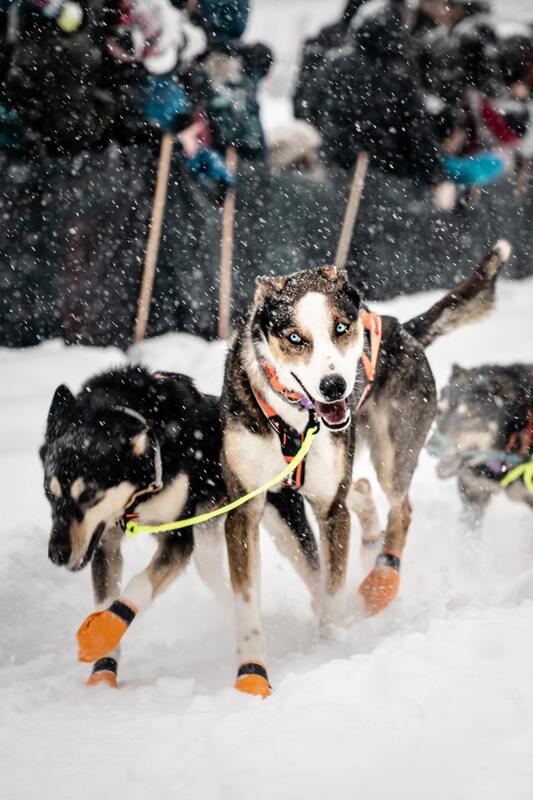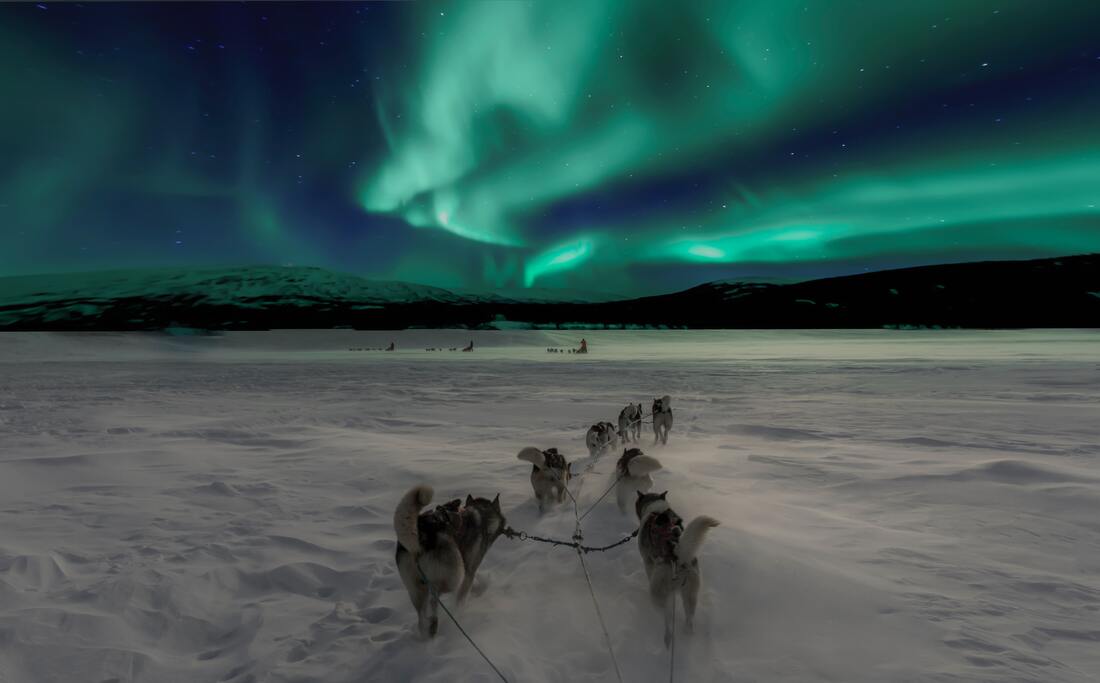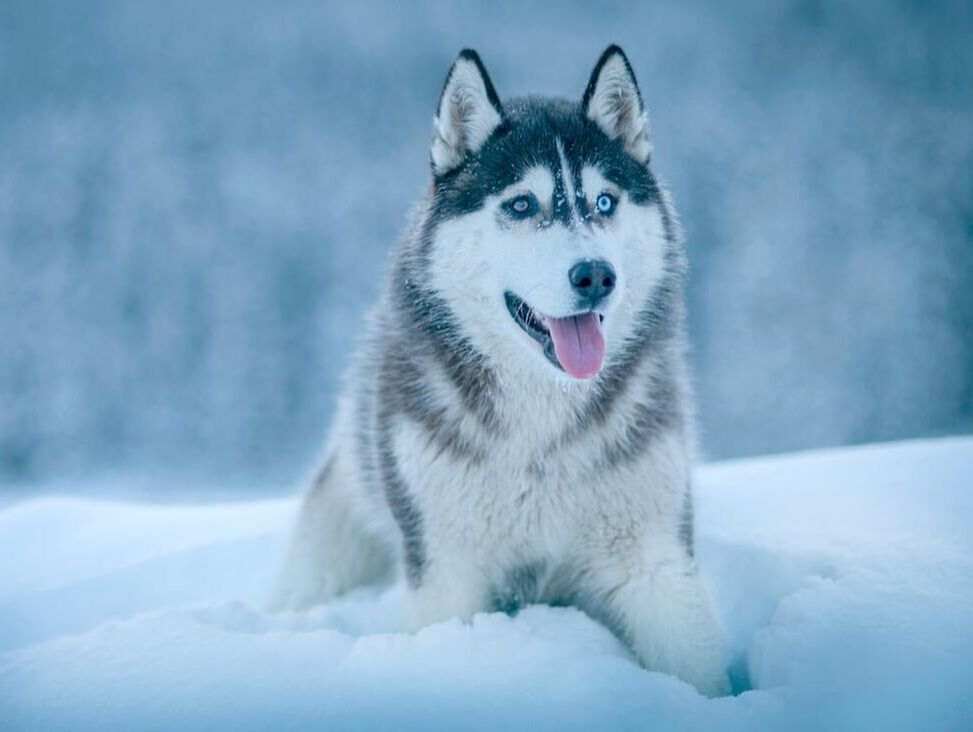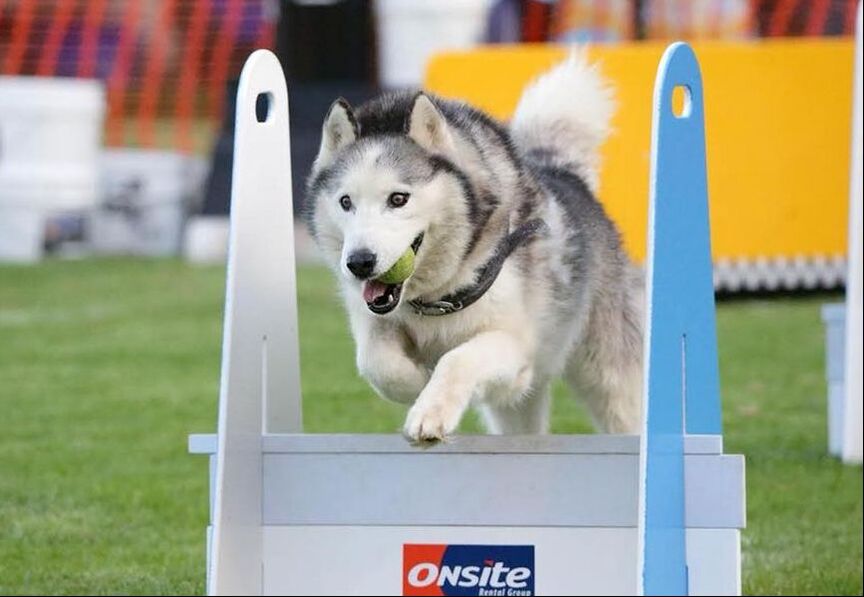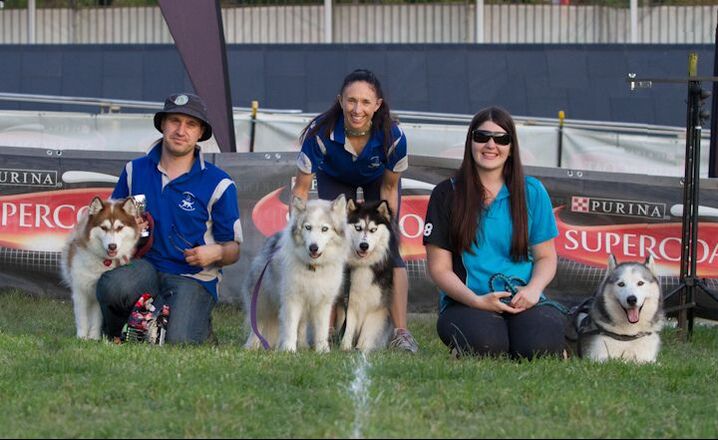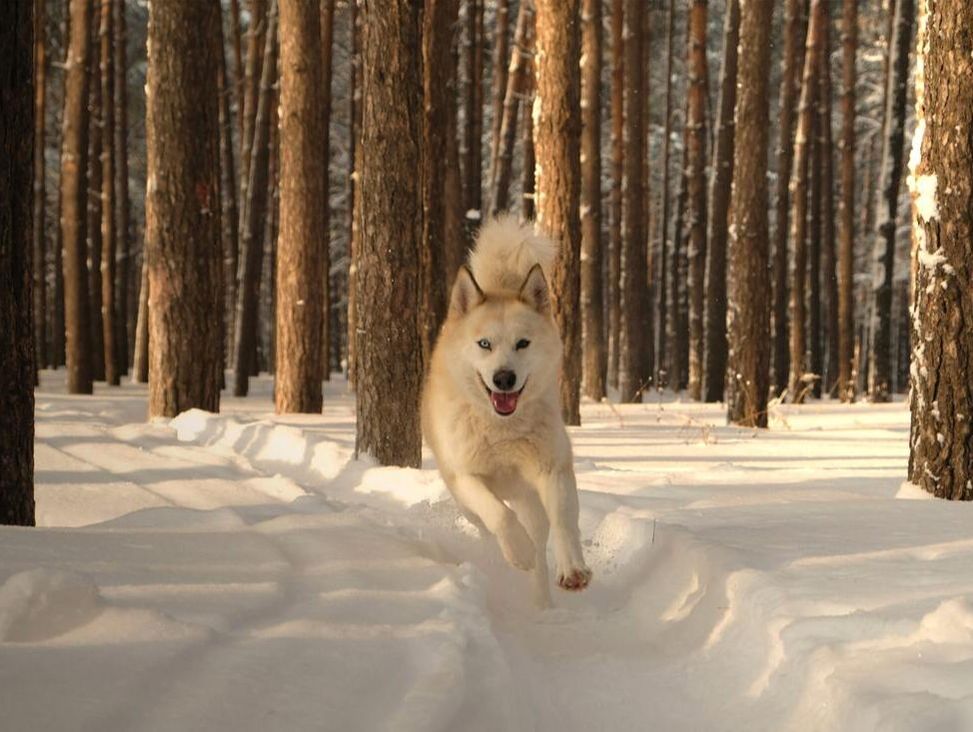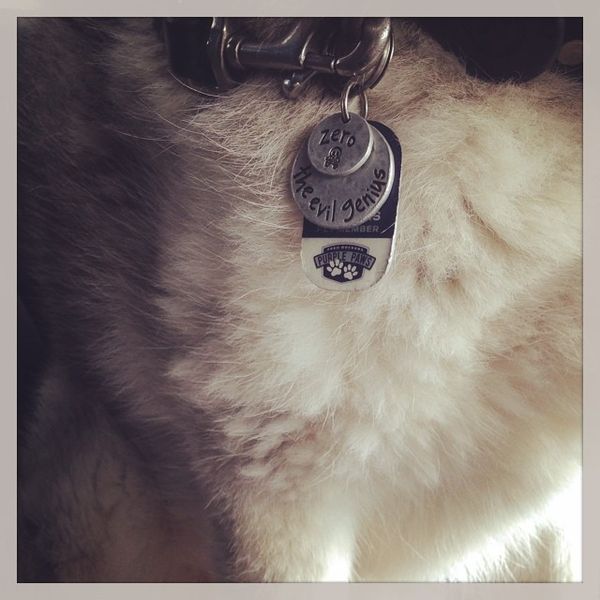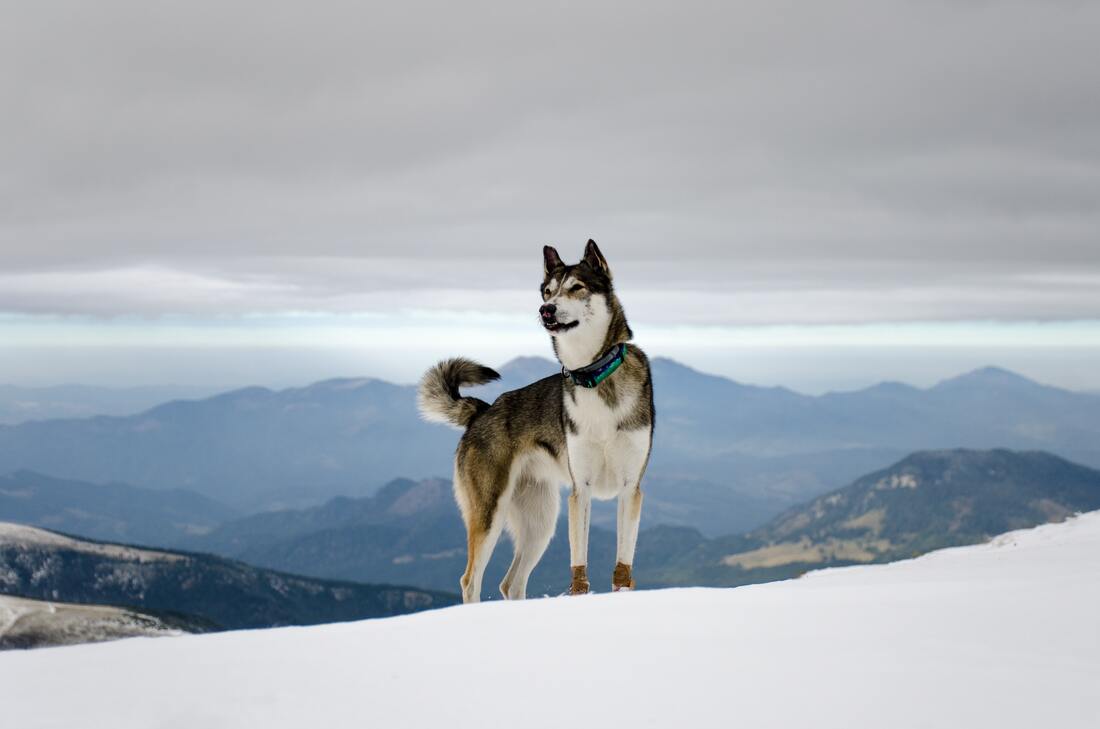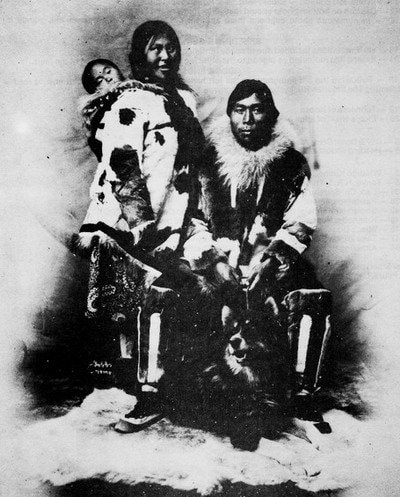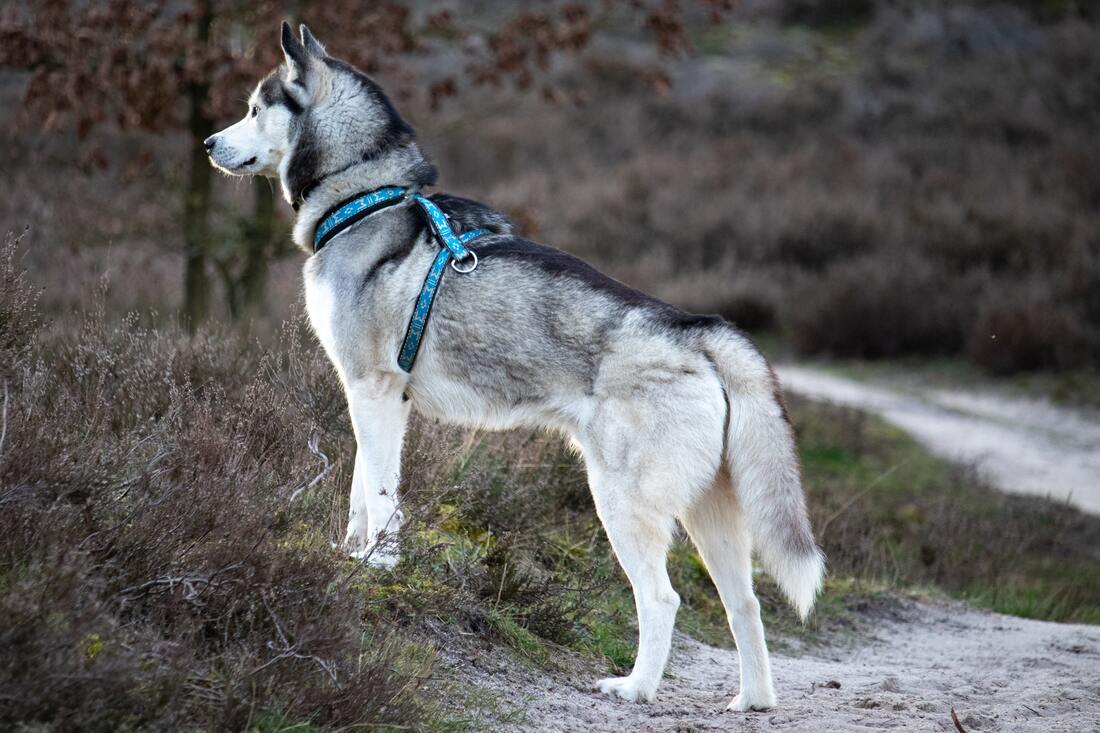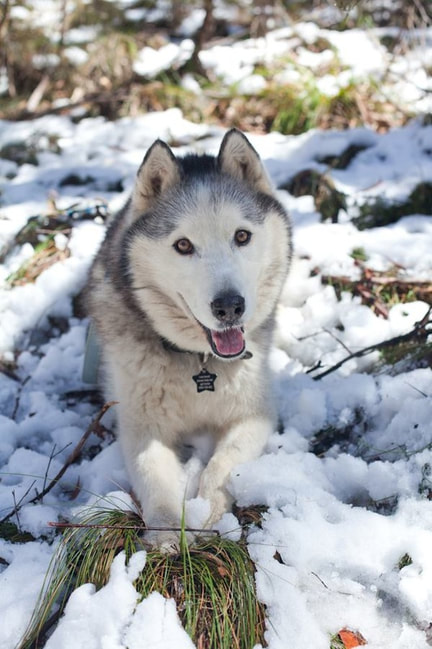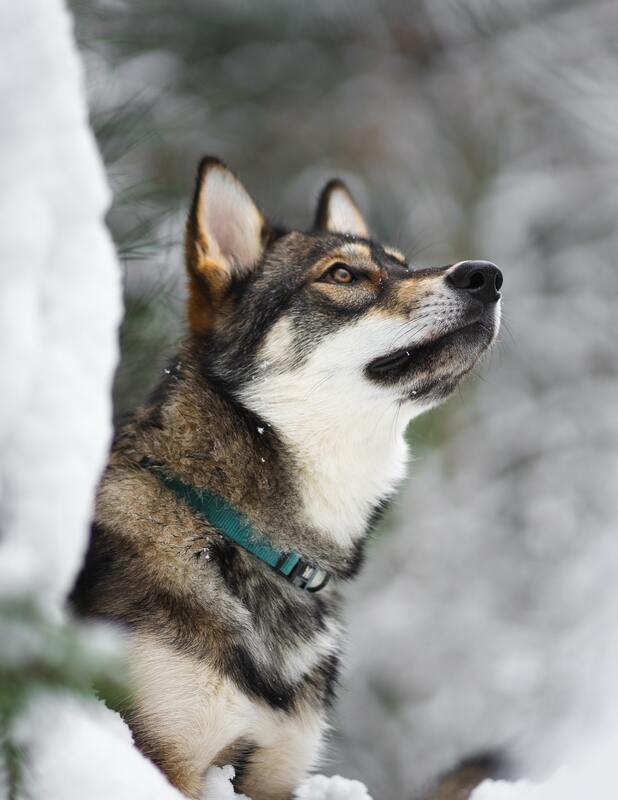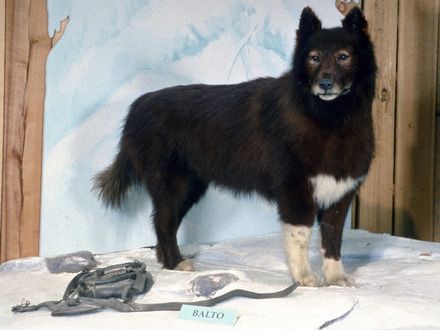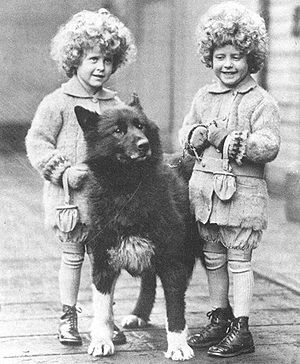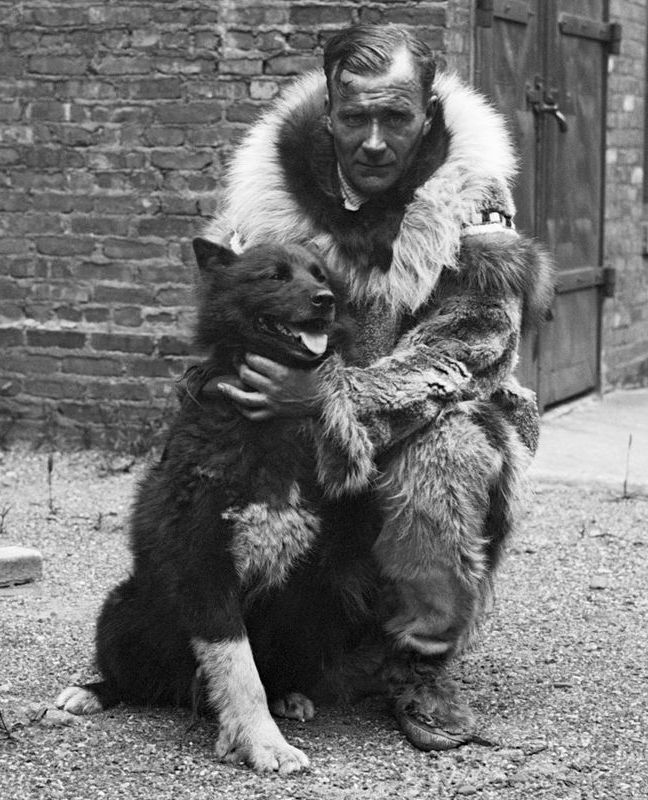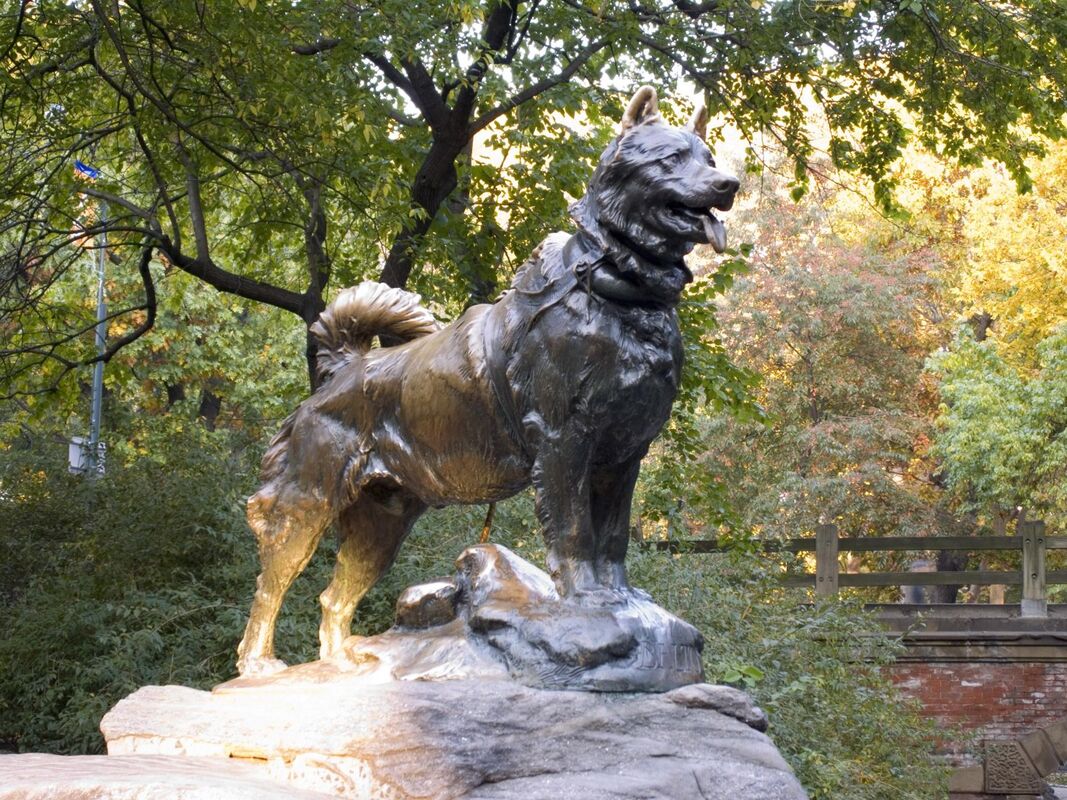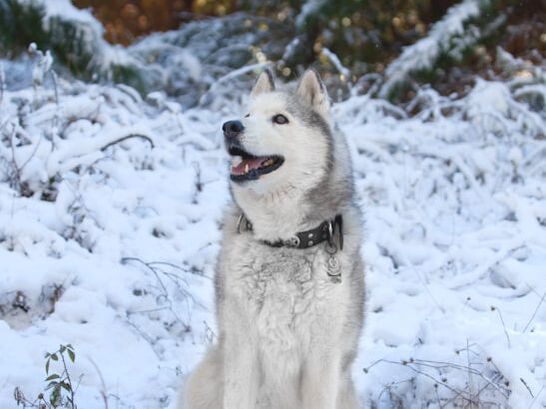I am a "Siberian" or a "Sibe", not a husky!
About the breedFamed for their good looks and wolf-life appearance, the Siberian Husky is one of the oldest dog breeds in the world, with ancestors dating back 3000+ years.
They were originally bred by the indigenous, semi-nomadic Chukchi people of north-east Asia, who needed an endurance dog, to pull their sleds over long distances at speed, with minimal expenditure of energy. As the climate changed, the Chukchi people's hunting grounds became more and more expansive, and they relied on the dogs for their survival for many generations, almost completely isolated from the rest of the world. It wasn't until the Klondike (Alaskan) Gold Rush in the late 1800s that the breed really made a name for itself. During this time, the Chukchi dogs proved their worth in races, which were set up to amuse prospectors, and show off their dogs' working skills. The dogs quickly became a commodity as they were able to pull as much weight as a man could, but could do so significantly faster, enabling prospectors to move much quicker than they could have done otherwise. After the serum run of 1925, the breed exploded in popularity in the United States, as a sled racing dog and eventually, a family pet. The first Siberian Huskies were imported into Australia in 1976 and their numbers have risen quickly ever since. They are a valued family dog, though they can be somewhat stubborn, aloof and independent so continual socialisation and training is required and they are definitely not the breed for everyone. |
At a glance
Physical Traits
Training
Exercise
Grooming
Health
Physical Traits
|
A medium-large sized dog with a thick double coat, Siberian Huskies are well known for their distinctive markings and array of eye colours, as well as their wolf-like appearance. Though they are not as large as their cousins, the Alaskan Malamute, dogs should be 53-60cms tall at the shoulder and weigh in at roughly 20-27kgs while bitches should be 51-56cms at the shoulder and around 16-23kgs.
It is a common misconception that Sibes all have blue eyes - they can have brown eyes, blue eyes, one of each (bi-eyes) or even eyes that are part blue and part brown (parti-eyes). |
Training
|
Siberian Huskies are incredibly intelligent, with many owners quickly realising that their dogs have trained them rather than the other way around. Because they are so smart, obtaining reliability in training, particularly under distraction can be difficult, but it is achievable, especially with positive reinforcement training and a great reward history, built over time.
Behavioural issues in the breed include digging (a natural behaviour for them, as they would dig a hole to sleep in), chewing, howling and escaping (fence jumping) though these can usually be curbed with training and mental stimulation. Their high prey drive means that they can be prone to chasing (and killing) small animals so it is generally recommended that you do not let your Sibe off lead, unless you have put in the training to ensure that they will come back when called. |
Exercise
|
Siberian Huskies are bred to run so they do require a relatively large amount of exercise. It is recommended that you provide an hour of walking each day, or lots of free running if you have a safe space where they can be let off lead.
Due to their thick coat, the breed can be head affected so they should never be exercised in warm weather. Lots of Sibes enjoy active pursuits like swimming, canicross (cross country running) and sledding if their owners allow them to do so. There are many Sibes competing in active sports like flyball and agility both here in Australia and overseas. |
Grooming
|
Siberian Huskies have a thick double coat. The undercoat is soft, dense and capable of insulating them in temperatures of up to -60°C, while the longer, harsher top coat provides their all weather protection.
Grooming is simple, though it can be time consuming - they do not need bathing often and generally don't smell "doggy" but benefit from a regular brushing or combing with an undercoat rake or comb, or blowing out with a forced air dryer, which forces the loose hair out of the coat. Sibes should not be clipped or shaved as they have sun-sensitive skin and their coat is designed to act as insulation from both heat and cold. They can actually overheat faster without the protection of the coat. Rather than shaving them in summer, ensure they have access to the shade (or air conditioning!), and plenty of cool, fresh water. |
Health
|
While Sibes are a relatively healthy breed, they should be screened for health issues like juvenile cataracts and hip and elbow dysplasia.
Breeders should have hip and elbow scoring done on every dog they plan on breeding from, which involves x-rays being taken of the hip and elbow joints and sent away to a specialist for "scoring" under the ANKC's Canine Hip and Elbows Dysplasia (CHED) scheme. They should also conduct eye testing under the Australian Canine Eye Scheme (ACES) at least every 2 years. Ask your breeder to produce these certificates for the parents of your new puppy prior to purchase. |
The Siberian Husky's Original Purpose
The Legend of the Sled DogSibes were originally bred by the semi-nomadic Chukchi people of Eastern Siberia, who relied on the breed to support their hunter-gatherer lifestyle. They were bred to pull their owner's sleds through the snow, protect their families from strangers and to help them hunt.
The dogs needed to be able to pull lightly loaded sleds across the frozen landscape at speed so the breed evolved to be quick and agile on their feet, intelligent enough to recognise the danger of thin ice, deep snow or unstable terrain (and make the split-second navigational decisions needed to get through it safely!) and also have great endurance. During summer, the Chukchi people would allow them to roam free, enabling them to hunt in packs, preying mostly on small animals, birds and wild cats. For this reason, Sibes have a high prey drive and it is not common for them to be placid enough to live with cats or pocket pets unless trained to be around them as puppies. |
Siberian Huskies as pets
Though more than 3500 years separates them from their wolf ancestors, Sibes do tend to display a number of wolfish behavioural traits. As a whole, they are more primitive than most breeds and this can be difficult for new Sibe owners to adjust to, particularly if they are used to more people-focused dogs. While they are often aloof with most strangers, they form close bonds with their families, and it's not uncommon for them to pick a favourite in the house.
They are known to be good with children and will tend to take themselves out of a situation if they are uncomfortable, however training, socialisation and supervision is always important when they are around children, or when you are introducing your Sibe to new people, or changing their circumstances (eg. when bringing a new baby into the house).
Rather than a bark, Sibes tend to howl, they are known to have a highly developed prey drive (cats, pocket pets and possums beware!), and without adequate mental stimulation, they can become very destructive. They are also well known escape artists and cannot often be trusted to be let off lead.
As a whole, they require less food than other breeds due to their slower metabolism. While this is very useful when they need to run through the snow for many hours, with little food to sustain them
Sadly, because of their beautiful primitive looks, they are often a target for owners who are ignorant of their needs. Because of this, they regularly end up in pounds and shelters.
They are known to be good with children and will tend to take themselves out of a situation if they are uncomfortable, however training, socialisation and supervision is always important when they are around children, or when you are introducing your Sibe to new people, or changing their circumstances (eg. when bringing a new baby into the house).
Rather than a bark, Sibes tend to howl, they are known to have a highly developed prey drive (cats, pocket pets and possums beware!), and without adequate mental stimulation, they can become very destructive. They are also well known escape artists and cannot often be trusted to be let off lead.
As a whole, they require less food than other breeds due to their slower metabolism. While this is very useful when they need to run through the snow for many hours, with little food to sustain them
Sadly, because of their beautiful primitive looks, they are often a target for owners who are ignorant of their needs. Because of this, they regularly end up in pounds and shelters.
The Siberian RainbowUnlike many breeds, Siberian Huskies come in a myriad of different colours and patterns, everything from a pure white, to almost totally black.
Due to selective breeding, most show-line Siberians fall into the most common colour groups - red/copper and white, black and white and either silver/grey and white or wolf grey - however you do see the occasional individual from one of the less common colours. Racing/working-line Siberians are not valued for their looks in the same way, so on top of tending to have a lighter, more sleek appearance it is much more common to see other coat colours and markings coming through. Agouti (a "wild" looking colour with a banded top coat and a cream undercoat), Sable (a reddish or brownish-tinged coat with a black nose), Saddleback (black tipped guard hairs over the back with shoulders and haunches ether white or red), mostly black, piebald (more than 50% white) and splash coat (saddle of one colour, with the rest of the coat a different colour/s) dogs aren't uncommon in racing-line Sibes. All of these colours can also be found in a wooly coat variety, caused by a recessive gene inherited from both parents. Wooly coats are longer and softer than usual and appear to drape, rather than stand off the body. While wooly coated Siberians are beautiful, their coat is incorrect, as it picks up snow much easier, which is then able to ball up and freeze into the coat. Due to it's tendency to matt and knot, it requires a lot more work to maintain. |
Endurance · Fidelity · Intelligence
The Great Race of MercyThe Siberian Husky gained fame in 1925, when a diphtheria epidemic broke out in Nome, Alaska. Twenty teams of sled dogs relayed the medicine the town needed over 650 miles from Nenana to Nome, saving the lives of more than 10,000 people.
Though Balto didn't run the longest stretch of the relay (that honour was given to Leonhard Seppala's Togo who led his team for 264 of the 674 total miles and who has now had a Disney film made about him), he was the lead dog of the team that ran the serum into Nome, and had fought through impossible conditions (including the dogs and sled being lifted off the ground in a blizzard!). The entire relay took just 127.5 hours - or just over 5 days -to Balto, became the most famous Siberian Husky in history, having toured throughout the USA after his run and commemorated in a bronze statue in New York's central park. The plaque below Balto's statue reads: Dedicated to the indomitable spirit of the sled dogs that relayed antitoxin six hundred miles over rough ice, across treacherous waters, through Arctic blizzards from Nenana to the relief of stricken Nome in the winter of 1925. Sadly, Balto and the other dogs in his team were left to languish in a dime-a-look side show, hitched up to a sled with nowhere to go, when their handler was recalled to Alaska. Finally, they were purchased by a touring businessman and sent to Brookside Zoo, where Balto lived out the rest of his days. He died 8 years after the serum run, in 1933, aged 14.
Today, the Iditarod Trail Sled Race commemorates the indomitable spirit of the sled dogs who ran in The Great Race of Mercy, held over the path Balto and the other dogs took. |
Siberian Huskies at Pawformance
Though our only Siberian Husky passed away in 2018, we are passionate advocates for the breed. Zero left a massive legacy at Pawformance, and when time allows, we will have another Sibe join us.
|
NSW Breeder Identification Number: B000685661 | Victoria Source Number: EE102260
Dogs NSW Member Number: 2100088743 |
© Pawformance 2023
|

